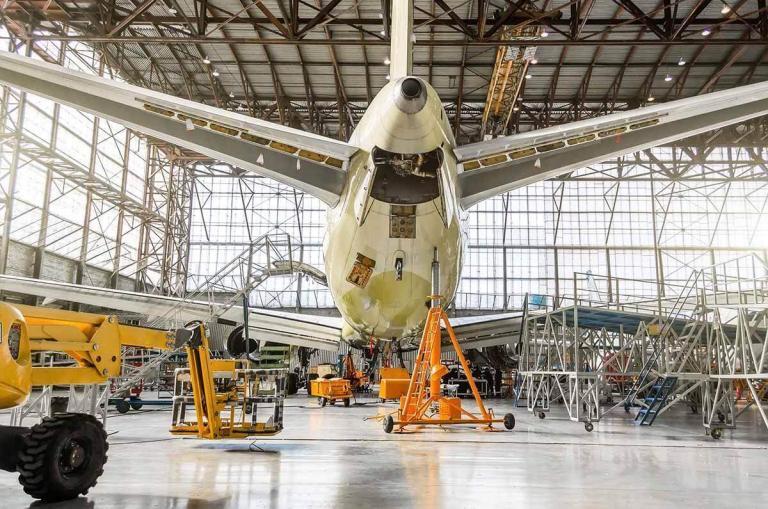Advances in precision agriculture, electrification, automation/robotics, and autonomous tractors, paralleled by new business models such as digital advisory, online marketplaces, P2P renting and leasing are set to shake up the global agricultural tractor ecosystem.
The global agricultural tractor market is in the midst of innovation-led growth. Advancements in precision agriculture, electrification, automation/robotics, and autonomous tractors, paralleled by new business models, are set to underpin strong revenue growth. While developing markets, including India and China, will exhibit strong potential for volume growth, developed markets in Europe and the US will spearhead technological and business model transformation.
To learn more, please access Electric Off-highway Equipment Growth Opportunities, Top 10 for 2023: Predictions for the Off-highway Equipment Industry, and our forthcoming reports on Growth Opportunities in Global Agricultural Tractor Industry – Forecast to 2030 and Growth Opportunities in Global Refuse Hauler Market – Forecast to 2030 or, contact sathyanarayanak@frost.com for information on a private briefing.
A Transformative Impact
Our research highlights five major areas where innovation is occurring with implications for the global agricultural tractor market.
The first is precision agriculture – a range of technologies that combine to improve productivity, crop yields, operational efficiencies, resource utilization, farm management, and tracking and connectivity among tractor fleets. These technologies will also support overall reductions in labor costs, water usage, and greenhouse gas (GHG) emissions.
Agricultural robotics will become integral to new farming techniques. For example, advantages yielded by remote sensing and vertical farming are poised to position robotics as a key aspect of farming.
The emergence of autonomous tractors towards the end of this decade will change traditional agricultural practices. An organic extension of precision agritech, autonomous tractors will offer multiple benefits. For a start, they will help minimize the need for manual labor, thereby addressing persistent labor shortages that ail the agricultural sector. They will increase efficiency and productivity, improve safety, reduce emissions, lower labor costs, and optimize fuel and fertilizer use. This, in turn, will allow farmers to make more informed decisions, while enabling significant cost savings. However, it is worth noting that there are likely to be multiple teething challenges in the early stages. Primary among them will be costs since the technology will initially be more expensive than traditional equivalents, even as regulatory, technical and cybersecurity concerns will also need to be addressed. Autonomous tractors are expected to be more expensive than conventional tractors during the initial phase of commercial launch.
The twin trends of decarbonization and innovation will continue to be the core focus of agricultural tractor manufacturers. Several technological initiatives today emphasize the mitigation of carbon emissions in agricultural tractors. Consequently, innovation is taking the form of electrification of powertrains, modifications to engines, switch from diesel to alternative fuels like biodiesel or renewables, and even alterations in tractor implements such as electrification of PTO, no-till technology, variable rate applications, and controlled traffic farming.
Innovation on the technological front is being accompanied by transformation on the business model side. The overarching objective will be to deepen customer-OEM engagement. Digital advisory, for instance, is a new paradigm wherein a range of services—from equipment choice and tech integration upgrades to aftermarket support—is all provided digitally. Today, regions with more developed agricultural sectors like North America and Europe are establishing global best practices in digital delivery.
Other novel business models that are transforming the agricultural tractor and farming market include P2P lending which helps farmers, especially small holders, to lease and rent purpose-built equipment for short periods of time. Blockchain technology is enhancing track and trace capabilities of farm products, thereby addressing supply chain difficulties, environmental, social and governance (ESG) related concerns, and the demand for sustainable procurements.
The concept of retail is also undergoing change; OEM sales platforms are diversifying away from traditional brick and mortar stores to embrace direct-to-customer channels via online marketplaces. Meanwhile, online platforms are facilitating lending and sharing of mechanized equipment, parts and attachments.
These new business models are associated with more choice, more value, and more revenue potential across the lifecycle of the equipment. For example, John Deere’s Software as a Solution (SaaS) and agritech subscription service for autonomous tractors and Mahindra’s ‘farming as a service’ highlight a win-win situation across the farming and tractor space where companies are evolving from being merely tractor manufacturers to becoming service providers.
Cross-industry Collaboration is Key
Our research shows that both revenues and unit sales will receive impetus over the near term from mechanization mandates and strong agricultural demand in major developing countries. Growth over the longer term will be linked to technological advancements and robust agricultural uptake in developed countries, together with automation imperatives as well as ‘green’ incentives in emerging markets.
Due to the rapid pace of change, we are likely to see partnerships and inorganic growth strategies being pursued by major players as they strive to stay competitive. Examples include Deere & Company’s acquisition of Blue River Technology and Bear Flag Robotics, and CNH Industrial N.V.’s acquisition of Raven and AFS Connect. Invariably, this will result in market consolidation. Simultaneously, startups are likely to disrupt the ecosystem with niche products and targeted solutions.
As the agricultural sector transforms, we will continue to see both organic and inorganic growth and cross-industry collaborations between tractor OEMs, startups, digital solution providers, battery manufacturers, utility companies, and leasing/financial organizations, among others. The global agricultural tractor space will be characterized by a flurry of mergers, acquisitions, strategic partnerships, dealership agreements, and brand agreements.
With inputs from Amrita Shetty, Senior Manager, Communications & Content – Mobility




